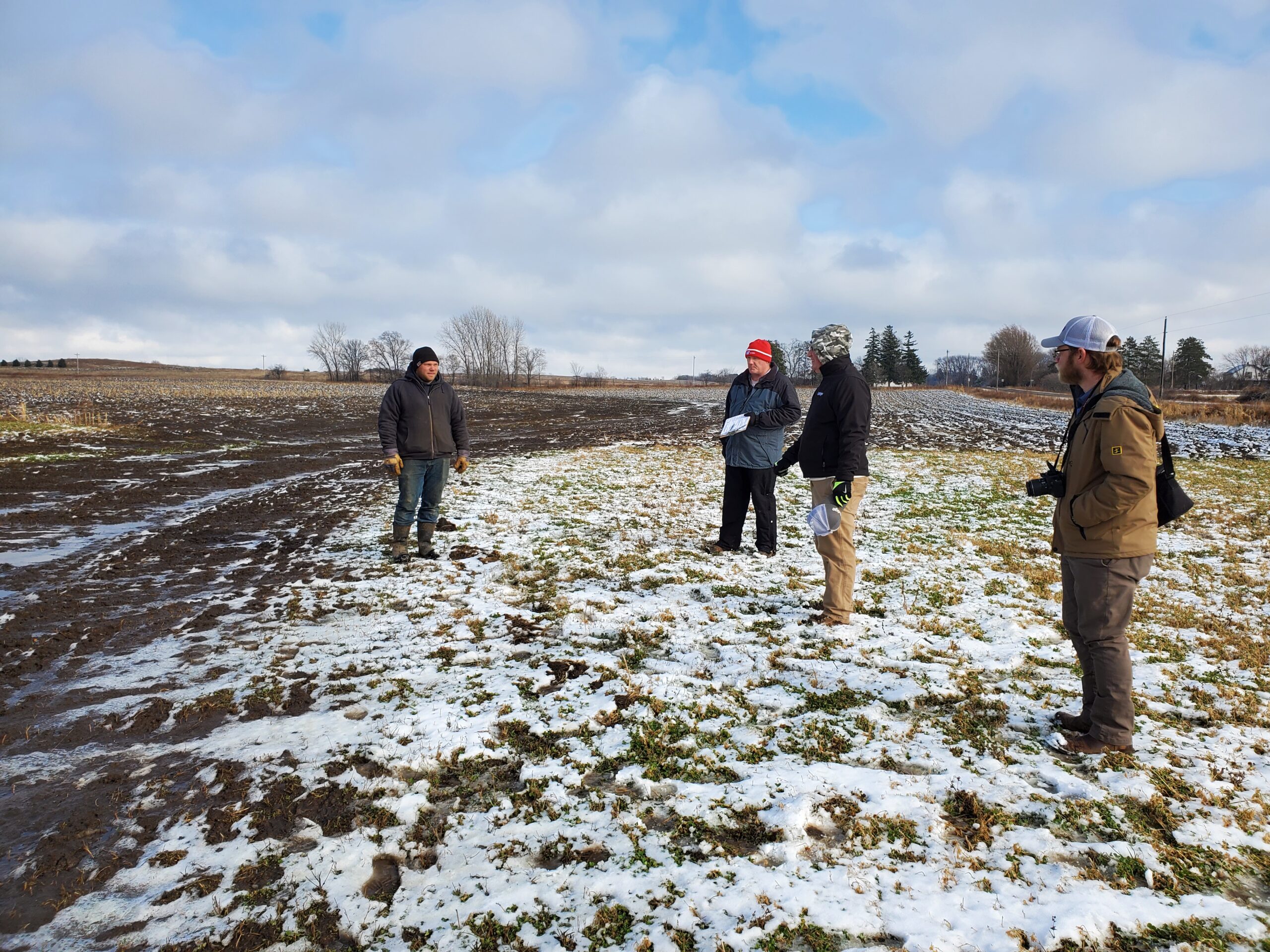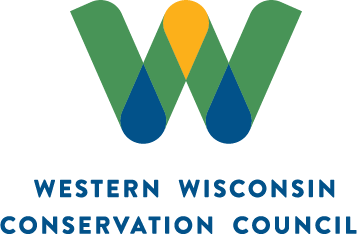Western Wisconsin farmers collaborate to prevent erosion
By Steven Schauer for WWCC
BALDWIN, Wis. — There is a purpose behind the grass waterways and berms people see in fields and ditches when driving through farm country. Those conservation practices by farmers in western Wisconsin are proving to be valuable in the Kinnickinnic, Rush and Willow river watersheds.
Western Wisconsin Conservation Council (WWCC) hosted a field day on Nov. 11 to talk about how grass waterways and other practices help protect the soil and water near and in farm fields. WWCC members Jerry Emmert, Todd Doornink and Tom Zwald demonstrated what they have been doing on their farms.
Emmert installed a diversion berm to reduce erosion, Doornink reworked a waterway and planted grass to provide protection to his field, and Zwald constructed a waterway and planted rye to decrease soil loss.
“We installed a berm on our farm to control the water coming from an adjacent property,” Emmert said. “We rerouted the water from coming across our farm to go through the road ditch. It has been successful for us because it keeps the water off our farm field. We have reduced erosion and gained some of the very best farmland back.”
Developing farming practices that protect water quality and soil health and doing so without breaking the bank are important goals for members of WWCC. The nonprofit farmer-led watershed conservation group is composed of grain, dairy and livestock member farms in Barron, Dunn, Pierce, Polk and St. Croix counties who also partner with The Nature Conservancy, researchers at University of Wisconsin-River Falls and others.
Western Wisconsin has a variety of soils, and farmers work their land near creeks, rivers and ditches. Members of WWCC share ideas and assist each other in creating and maintaining grass waterways to protect water quality and increase useable farmland. Some of the farmland is in flood-prone areas.
“In the last year, we took some acres that were highly susceptible to flooding and moved the boundaries back to keep the water out of our fields,” Doornink said about his Jon-De Farm fields located along 6 miles of the Rush River. “The most important thing is we are trying to protect the environment and then to make it more profitable for us. We took some land that wasn’t our best land and put it into a good conservation program to protect our local waterways.”
Doornink, WWCC’s president, is enrolled in the Conservation Reserve Enhancement Program (CREP), the country’s largest private-land conservation program. In exchange for removing environmentally sensitive land from production and establishing permanent resource-conserving plant species, farmers and ranchers are paid an annual rental rate along with other federal and non-federal incentives as applicable per each CREP agreement. Participation is voluntary and the contract period is typically 10-15 years.
It is common to find WWCC members working with government agencies to protect the environment and improve farmland.
Jeff Jackson, a state Department of Natural Resources wastewater specialist, was pleased with the grass waterways he viewed at Jon-De Farm. He said it is essential to maintain the waterways to prevent runoff and keep water flowing.
“The importance of the established grass waterway is to prevent soil erosion,” Jackson said. “There is so much water flowing through parts of this area when it rains moderately that crops are overtaken by water. So, establishing waterways like these is important because it protects the water quality of the streams and rivers.”

